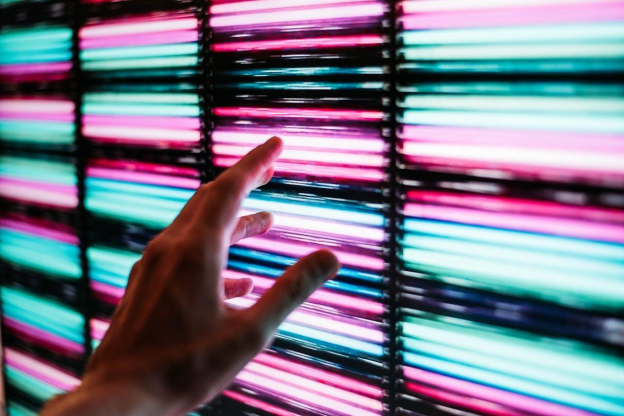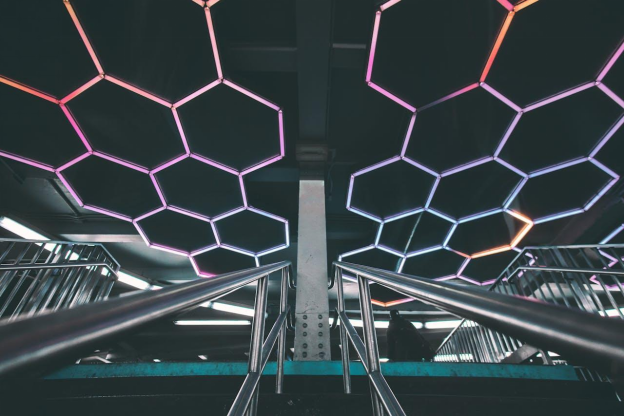Sansi LED: Sustainable LED Lighting and Integrated LED Display
Delivering premium and professional LED Display, LED Lighting, Smart City Integration solutions, trusted by over 60,000 companies worldwide everyday. From industrial lighting to commercial lighting, from outdoor advertising to XR & VR production, Sansi LED greatly improves the quality and sustainability of your business with 30 years of expert experiences.

LED lighting technology has revolutionized the way we illuminate our world. From energy efficiency to aesthetic versatility, LED lighting has set a new benchmark for lighting solutions globally. As this innovative technology continues to evolve, it’s worth exploring its journey, current state, and enoxciting possibilities.
Understanding the Origins of LED Technology
LED lighting originated in the early 20th century when electroluminescence was first discovered. Developing the first practical LEDs in the 1960s was a significant milestone. Initially, these LEDs emitted only red light and were used in indicator devices like calculators and watches. However, the groundwork during this period paved the way for multi-colored and high-intensity LED solutions that dominate today's market.
LEDs as a Game-Changer in Energy Efficiency
One of the most notable contributions of LED technology is its unparalleled energy efficiency. Unlike traditional incandescent or fluorescent bulbs, LEDs convert most of their energy into light rather than heat. This efficiency has dramatically reduced energy consumption across households and industries, making LEDs a cornerstone of energy-saving initiatives worldwide.
The Impact of LED Lighting Technology on Environmental Sustainability
LEDs are not only energy-efficient but also environmentally friendly. They have significantly reduced the carbon footprint of lighting systems by lasting longer and consuming less electricity. Additionally, LEDs contain no harmful substances like mercury found in fluorescent bulbs, making their disposal safer for the environment. This eco-friendly profile positions LEDs as an integral part of sustainable development goals.
Smart LED Lighting and the Rise of Connected Homes
The integration of LED technology with smart home systems has revolutionized how we interact with lighting. Smart LEDs allow users to control brightness, color, and timing through mobile apps or voice commands. This innovation offers unparalleled customization, ensuring that lighting meets functional needs and enhances mood and ambiance.
LEDs in Public Spaces
Cities worldwide increasingly adopt LED technology as a cornerstone of their sustainability efforts. By replacing traditional lighting with energy-efficient LEDs, urban areas significantly reduce energy consumption, enhance safety, and improve public visibility. This trend is particularly evident in sustainable cities in Europe, where LED streetlights and decorative lighting showcase a blend of ecological responsibility and innovative urban design. These installations symbolize a commitment to reducing environmental impact and set a global standard for forward-thinking, sustainable infrastructure.

Human-Centric Lighting: A New Frontier for LEDs
As research on the biological effects of lighting deepens, human-centric LED lighting has emerged as an exciting development. These systems are designed to mimic natural daylight patterns, supporting our circadian rhythms and enhancing well-being. This approach has applications in workplaces, schools, and healthcare facilities, where optimizing productivity and comfort is a priority.
Miniaturization and Integration in Electronic Devices
The compact nature of LEDs has allowed for their seamless integration into electronic devices. LEDs have expanded beyond traditional lighting applications, from smartphone screens to wearable fitness trackers. Miniaturization has enabled designers to create sleeker and more functional products, pushing the boundaries of innovation.
Advances in LED Manufacturing and Material Science
Recent advancements in LED manufacturing and material science have further enhanced their performance. Innovations like quantum dot LEDs (QLEDs) and organic LEDs (OLEDs) have provided superior color rendering and flexibility in design. These breakthroughs are opening doors to applications in high-resolution displays, flexible lighting panels, and even medical devices.
LEDs in Agriculture: Enhancing Growth with Controlled Lighting
Agriculture has emerged as an unexpected beneficiary of LED technology. LEDs provide controlled lighting conditions in vertical farming and greenhouse operations that optimize plant growth. By tailoring light spectra to specific crops, farmers can increase yields while minimizing energy use, contributing to sustainable agricultural practices.
What Lies Ahead for LED Technology?
The future of LED lighting technology is brimming with potential. Research focuses on laser-based LEDs, which promise even greater energy efficiency and brightness. Additionally, advances in AI integration may lead to intelligent lighting systems capable of adapting to user preferences and environmental conditions in real time.
The Role of LEDs in a Circular Economy
LEDs will be critical as the world shifts towards a circular economy. Efforts to design recyclable LEDs and reduce waste during manufacturing are gaining traction. Innovations like modular LED systems, where components can be replaced rather than the entire unit, will further extend the life cycle of these products.
Challenges and Opportunities in LED Adoption
Despite their advantages, LEDs face high initial costs and compatibility issues with existing fixtures. However, ongoing innovations rapidly address these concerns, making LEDs more accessible and versatile. Governments and organizations continue incentivizing LED adoption through subsidies and awareness campaigns, further accelerating their integration into various sectors.
The Cultural and Aesthetic Influence of LED Lighting
Beyond functionality, LEDs have transformed how we perceive and experience light. They have enabled dynamic lighting displays in architecture, art, and entertainment. From mesmerizing light shows to energy-efficient holiday decorations, LEDs have given designers and artists an unparalleled tool for creativity.

The evolution of LED lighting technology is a testament to human ingenuity and the relentless pursuit of sustainability and innovation. As we look to the future, LEDs promise to illuminate not only our homes and cities but also our path toward a brighter, more sustainable world. From their humble beginnings to their pivotal role in shaping modern life, LEDs continue to redefine what’s possible in lighting technology. With advancements on the horizon and increasing adoption in diverse sectors, LED lighting will undoubtedly remain a beacon of progress for years.
-
NO DATA
